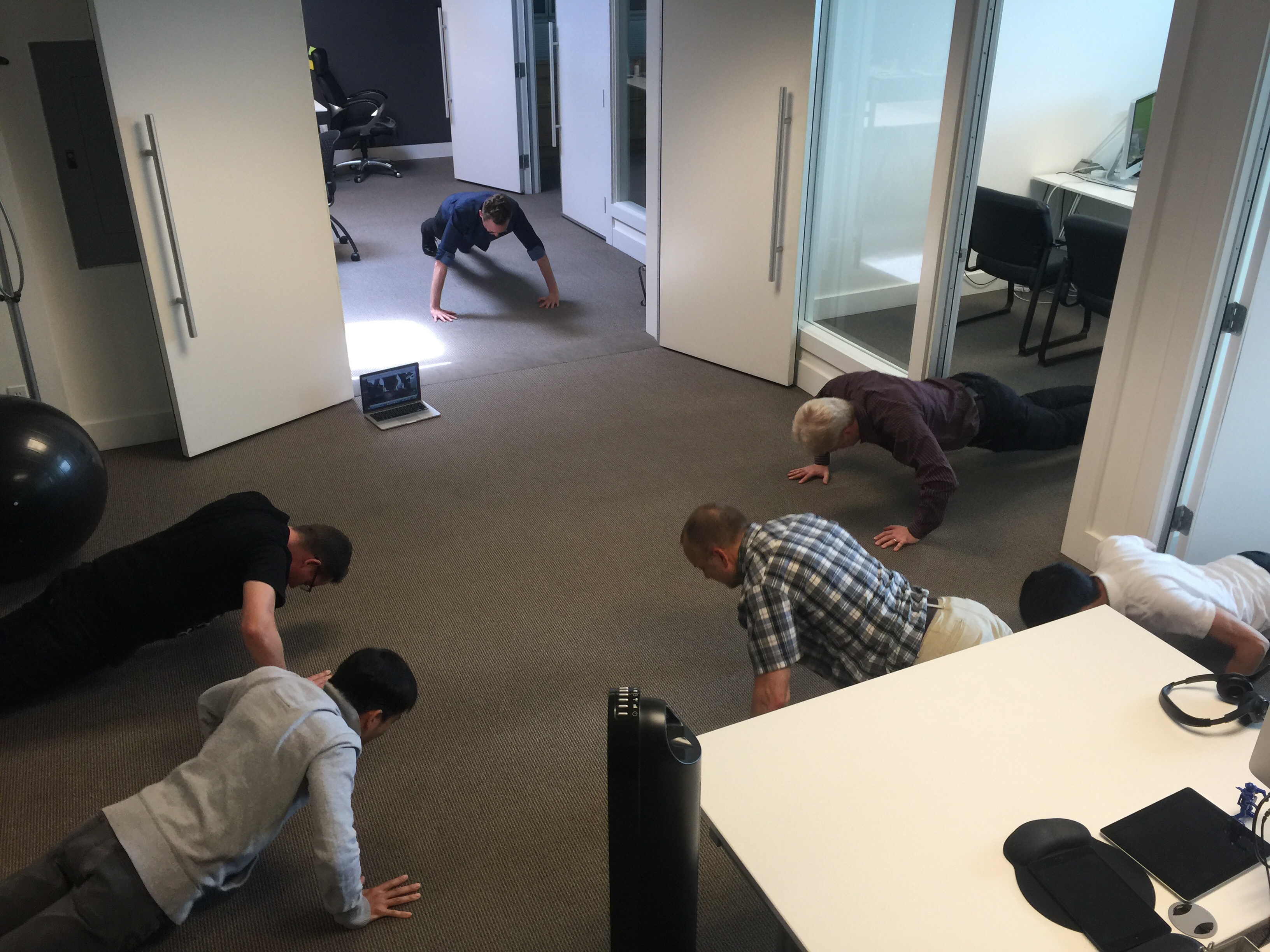Bridging the Communication Gap on Distributed Teams
This article was last updated in January 2022.
Of the many things that contribute to the success of a project, communication is the most important. While every project will differ in its requirements, team members, and plan, at the most basic level their goals should always be the same: to add value for the client. Open communication -- that is, the free exchange of ideas, collaboration, and ensuring clarity and direction is the lynchpin that holds a project together in the pursuit of that goal.
At ImageX, we believe in using the right tool for the job. And while “tool” usually means the specific software our staff uses to execute tasks, it also extends to the individuals themselves and how we bridge together teammates and project details. Among the many benefits of being one of the top-ranked Drupal agencies in the world is that we attract some of the top-ranked talent in the world -- and just like we don’t confine ourselves to a specific geographic area when we’re choosing which clients to partner with, neither do we for the teams we build to service them.
That team is usually based at our office in Vancouver, but it also includes those of us who help expand the depth and breadth of our agency -- remote employees, or as we affectionately call them, our “remotees.” For those of us who do work remotely, myself included, the benefits are vast:
- We’re liberated from our desks;
- Our morning commute is usually from our breakfast table to our den or workspace;
- Or for that matter, our office is wherever we make it -- a café, library, or even on our travels; and,
- We have the flexibility to set our own schedules and be more available for life’s demands (as long as we’re available for meetings and client commitments, of course -- more on that below).
And for ImageX, the world becomes our talent pool and this allows us to hire the best people available for every position -- whether they’re in Vancouver, Toronto, Sweden, Ohio, Seattle, Taiwan, Florida, or the Ukraine (ImageX has remotees in all of these locations). Working remotely also has quantifiable benefits to a business’ bottom line:
- Two-thirds of managers reported that employees are more productive when working remotely;
- 54 percent of remote workers reported completing as much or more work in less time because of fewer distractions;
- 82 percent of remote workers reported lower stress levels;
- Attrition rates fall by as much as 50 percent;
- 68 percent of younger workers said that the option to work remotely would “greatly increase” their interest in a specific employer; and,
- Businesses can significantly lower their overall operating costs.
And not to mention the environmental impact of fewer people commuting. When health insurance company Aetna measured the benefits of their remote working policies, they found that their employees drove 65 million fewer miles, saved over two million gallons of gas, and reduced carbon dioxide emissions by over 23,000 tonnes per year.

But working with distributed teams isn’t without its challenges. Communication problems can surface easily, whether because of logistics due to time zones or something simply being lost in translation online, and it’s easy to feel isolated at a home office and disconnected from your team. Like any project, overcoming these challenges and adding value to your team comes from having a strong plan in place to mitigate them. Building your team with the right mix of individuals, having a structured communication plan in place, and using the right tools for each job can help you realize the benefits of working with a distributed team.
Building Your Remote Team
Managing distributed teams introduces some additional considerations to make when you’re recruiting for new staff. Outside of the core competencies of each position, we’ve found emphasizing these four qualities to be a good predictor of success:
- Is the candidate self-motivated? Working autonomously and independently requires a very high degree of self-motivation, rather than the constant encouragement and motivation that can be expected in a traditional office environment.
- Does the candidate have strong communication skills? With limited face-to-face contact, above-average communication skills become even more important. Can the candidate communicate clearly and concisely, regardless of the medium, and accommodate for the subtlety and nuance that can often get lost?
- Is the candidate results-driven? In the absence of more subjective evaluations, it’s important that your team members set clear objectives and that they’re measured against them.
- Is the candidate open, honest, and transparent? This one is often the most important because you’re relying on your team to pro-actively raise any problems or concerns that could otherwise slip by unnoticed if people confine themselves to communication silos. The more forthcoming and straight-forward, the better.
Building teams of self-sufficient individuals who are empowered to work autonomously will encourage open communication and collaboration between members, rather than top-down (micro)management.
A SMART Communication Plan
With a distributed team, it’s essential that all members unite around a clearly defined and shared goal or purpose. A strong project and/or client manager can act as the advocate for this goal or purpose when any gaps occur and be the face of the team to the client. When defining the team’s goal or purpose, consider the SMART framework:
- Specific
- Measurable
- Attainable
- Relevant
- Time-bound
Whether it’s included in a formal team or project charter, or more informally in how the project manager oversees the team day-to-day. Creating and fostering a results-driven culture is essential. Rather than tracking the team’s working hours (though we still track project hours for billing, efficiency, and accountability to the client), it’s more important that they’re able to produce results that drive the team towards their goals on a sustained basis.
And it’s incumbent upon the project manager to ensure continued clarity on what those goals are. Bringing your team together for regular meetings, either in-person or digitally, is the best way to make certain of this. Daily stand-ups for the project team where each member shares what they worked on yesterday, what their goals are today, and if there is anything blocking their progress shouldn’t take more than 10-15 minutes each morning, but will save exponentially more time in focus.
Weekly team-wide stand-ups allow department leads and upper management to share higher-level progress and help bring any remote staff out of their project silos and into the “office”. We don’t use these meetings to discuss the specifics of any projects -- rather, they bring the team together so that we can hear each other’s voices and see each other’s faces (even if they’re just on a screen), and it reinforces the bigger picture that each individual project is working towards.
The Right Tool for the Job
Once you have the right team members in place and a plan to facilitate communication, you need the tools in place to keep them connected. Using the right software can make communication seamless and effortless, and gives teams the advantage of having every project discussion documented, archived, and searchable -- far from the risk of impromptu drive-bys in the office.
Every project needs a central repository that captures the tasks, responsibilities, and dependencies involved. While physical backlogs with Post-It Notes are great for the office, they don’t help distributed teams. Trello is an easy-to-use Kanban-style board that lets you drag-and-drop cards between lists to show progress in real-time. Or for a more comprehensive and collaborative solution, we like Basecamp and Jira. For conversations between team members and clients, in-person meetings allow the participants to communicate verbally as well as non-verbally. There is no substitute for this, but web-based tools like Google Hangouts, Skype, and Slack are the next best thing. Their video functions help approximate in-person meetings and allow the participants to see each other’s faces to better detect nuance. And as a bonus, they have the added functionalities such as screen sharing that further simulate a meeting room setting. Skype and Slack are particularly helpful for team members in different time zones who may be limited in the meetings they can attend. Because they archive the transcripts of any typed conversation, it’s easy for anyone to catch themselves up at the beginning of their day without the risk of anything being missed in a game of broken telephone. It also allows for easy searching anytime someone needs something confirmed.
Finally, document repositories and collaboration tools like Google Drive and Dropbox can centralize any templates, documentation, design artifacts, and project assets while providing versioning control as well as the ability for multiple team members to collaborate on the same file at the same time.
Final Thoughts
It can be difficult for a team to build a positive culture when its members are distributed -- it’s not as simple as grabbing a coffee or going out for lunch. But a strong team culture extends beyond being social. It’s also about “seeing a vision, aligning to a mission, creating a sense of community and belonging and having loyalty to a project that gets people excited about work.”
- Get to know each other personally. Catch-up with each other before and after calls, take breaks and make time to chat, and build relationships that help build bridges across timezones and cultural divides;
- Take advantage of your communication tools and create spaces for team members to share off-topic, interesting, or funny content. We have Slack channels for #office, #kudos, #random, and even #nhl; and,
- Iterate. Like any project, test an idea and adapt based on what works and what doesn’t. Every team will have its own dynamic, and it’s essential that any plan adjusts to accommodate it. You won’t get everything right at first, but you can continually improve over time.
Does your organization have distributed teams? If so, what benefits have you realized, what challenges have you encountered, and what have you learned from the process? Get in touch below and let’s talk.



